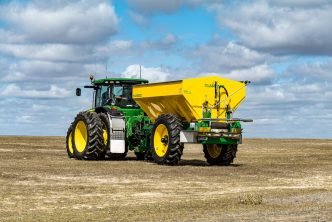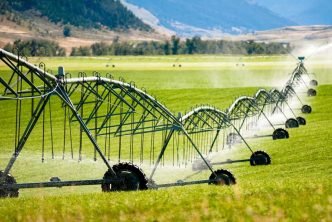Agriculture has been the backbone of human civilization, providing sustenance and shaping societies for thousands of years. Yet, in our quest for abundance, it’s easy to overlook one critical component that makes all of this possible: soil. Often dismissed as mere dirt, soil is actually a complex and dynamic ecosystem that plays a crucial role in farming sustainability. Understanding how to nurture this invaluable resource is integral to achieving long-term agricultural success.
Without soil, there would be no food, no natural fiber for clothing, and no basic raw materials for many industries. Despite its apparent simplicity, soil is a complex blend of organic matter, water, air, and a wide variety of microorganisms that work in concert to support plant life.
Table of Contents
The Composition of Healthy Soil
Healthy soil is more than just mineral matter. It’s a living, breathing ecosystem, teeming with microorganisms like bacteria, fungi, and even small insects. These microorganisms play an essential role in breaking down organic material, thus releasing nutrients that plants need for growth. A well-balanced soil will have adequate levels of organic matter and a mix of particle sizes, ranging from sand to silt to clay.
Soil and Nutrient Cycling
One of the primary roles of soil in agriculture is to act as a reservoir for essential nutrients. Macronutrients like nitrogen, phosphorus, and potassium are critical for plant growth, and they are often supplied through fertilizers. However, over-reliance on synthetic fertilizers can disrupt natural nutrient cycles, leading to soil degradation. Practices like crop rotation and organic farming can help maintain nutrient balance.
Nitrogen Liquid Fertilizer and its Impact
In the context of nutrient cycling, nitrogen is of particular concern, as it’s one of the primary nutrients that plants need for growth. Nitrogen liquid fertilizer offers a highly soluble and quickly available form of this critical element. While it’s effective in promoting plant growth, improper application can lead to nutrient runoff and soil erosion. Therefore, it’s vital to follow recommended guidelines for application rates and timing to mitigate these environmental impacts.
Soil pH and its Importance
Soil pH, which measures the acidity or alkalinity of the soil, has a significant impact on nutrient availability. Certain nutrients become more soluble at specific pH levels, making them easier for plants to absorb. Monitoring and adjusting soil pH can help optimize nutrient uptake, thus promoting healthier and more productive crops.
The Role of Soil in Water Management
Soil doesn’t just hold nutrients; it also holds water. Understanding your soil’s water-holding capacity can significantly improve irrigation efficiency. Sandy soils drain quickly but don’t retain much water, making them less suitable for crops that require consistent moisture. On the other hand, clay soils hold water well but may cause drainage problems. By knowing your soil type, you can tailor your irrigation practices to minimize water waste.
Modern Techniques for Soil Monitoring
Advancements in technology are making soil analysis more accessible than ever. Portable soil testing kits, remote sensing, and data analytics can provide real-time insights into soil conditions. These technologies allow farmers to take corrective actions quickly, ensuring that the soil remains a robust and sustainable medium for crop growth.
Organic Practices for Soil Health
Many farmers are turning to organic practices to improve soil health. These practices include composting, cover cropping, and natural pest management techniques. Organic practices aim to enhance soil fertility naturally, reducing dependence on synthetic fertilizers and pesticides, which can have detrimental effects on soil microbiology.
Soil Erosion and Conservation Strategies
Soil erosion is a silent yet serious threat to sustainable agriculture. The loss of topsoil, which is the most nutrient-rich layer, can have devastating impacts on crop yield and quality. Modern farming practices, such as monocropping and overgrazing, often exacerbate soil erosion. However, there are effective ways to combat this issue, such as the use of terracing, contour plowing, and the planting of cover crops to protect against wind and water erosion. Implementing these conservation strategies can go a long way in preserving soil health, safeguarding water quality, and ultimately ensuring the long-term viability of farming operations.
Conclusion
Soil is an unsung hero in the narrative of sustainable agriculture, offering much more than a mere planting medium. It’s a vibrant ecosystem crucial for nutrient cycling, water management, and overall crop health. As challenges like climate change and food security loom large, understanding and preserving soil health becomes imperative. By employing modern technology and reverting to organic practices, we can secure a sustainable agricultural future built on the foundation of healthy soil.




